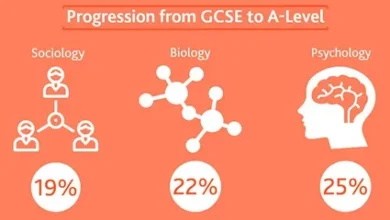What is Methodology in a Project Proposal Example?

In a project proposal, the methodology section is a critical component that details the approach or strategy planned to accomplish the project’s goals. It explains the methods, tools, and processes that will be employed to execute the project, offering a clear roadmap from start to finish. A well-defined methodology allows stakeholders and potential clients to understand how the project will unfold, helping to build trust and confidence in the team’s capabilities.
This section often includes specific processes for data collection, analysis, and execution, as well as project timelines and milestones. In essence, it answers the “how” behind the “what” of the project proposal.
Why is Methodology Important in Project Proposals?
The methodology section serves as the backbone of any project proposal. Without it, stakeholders are left with questions about the project’s execution, which can lead to doubts about the feasibility and reliability of the proposal itself. For example, in project proposal examples for research, software development, or construction, the methodology outlines all necessary procedures to avoid risks, save time, and optimize resources.
In addition, the methodology reflects the team’s expertise and preparedness. It showcases their planning and organizational skills, indicating to potential clients that the team is detail-oriented and committed to delivering results. When done correctly, this section is instrumental in winning proposals and gaining client approval.
Key Components of the Methodology Section
Here are the primary elements typically included in the methodology section of a project proposal:
- Overview of the Approach
A high-level outline of the project’s approach, setting the foundation for the rest of the methodology section. This overview should align with the project objectives and give stakeholders an idea of the general direction the team plans to take. - Tools and Techniques
In this part, the proposal should identify any specific tools, software, or frameworks that will be used. For instance, if a team is using agile software for project management or data analysis, these should be mentioned to indicate the sophistication and relevance of the resources employed. - Process and Phases
Breaking down the project into stages or phases is often essential to demonstrate organization. Each phase should include specific tasks or milestones to illustrate the project’s progression. For instance, a software development project might be divided into planning, design, development, testing, and deployment phases. - Data Collection and Analysis
Particularly for research-based proposals, this part explains how data will be gathered and analyzed. Whether through surveys, experiments, or direct observation, outlining these methods clarifies the project’s rigor and reliability. - Timeline and Milestones
Establishing a timeline provides a sense of the project’s duration and structure. It also allows stakeholders to track progress over time and ensures that deadlines are met. - Risk Management and Contingency Plans
Addressing potential risks and challenges is crucial for demonstrating that the project team is prepared for unforeseen issues. Including a contingency plan shows clients that the team has thoroughly considered alternative strategies should problems arise.
Example of a Methodology Section in a Project Proposal
To help clarify what an effective methodology might look like, here’s an example layout that could be found in a typical project proposal:
- Overview of Approach
“Our approach involves using an agile framework to ensure adaptability and rapid iteration throughout the project timeline.” - Tools and Techniques
“For data analysis, we will use Python programming and Tableau software to gather insights from collected data.” - Process and Phases
- Phase 1: Planning – Define project requirements and scope.
- Phase 2: Design – Create wireframes and project designs.
- Phase 3: Development – Code the project based on specifications.
- Phase 4: Testing – Conduct comprehensive testing and bug fixes.
- Phase 5: Deployment – Launch the project and finalize documentation.
- Data Collection and Analysis
“We will use structured interviews and surveys to gather data from target users, which will then be analyzed through a combination of quantitative and qualitative methods.” - Timeline and Milestones
- Month 1 – Complete planning and initial research.
- Month 2-3 – Development and testing.
- Month 4 – Final launch and performance assessment.
- Risk Management
“We have developed a risk management strategy that includes alternative workflows and additional testing stages to manage unforeseen delays or obstacles.”
How to Write a Methodology for Your Project Proposal
Creating a methodology section can be streamlined by following these tips:
- Understand the Project Requirements: Fully grasping the project’s scope and objectives is essential to defining a methodology that will meet expectations and satisfy client requirements.
- Break Down Each Phase Clearly: Use simple, organized language to describe each phase or step of the process. Clear explanations help clients understand the logical progression of the project.
- Use Visuals and Diagrams: Where appropriate, add timelines, flowcharts, or other visual aids. They make the methodology easier to follow and emphasize the logical structure of your approach.
- Include a Backup Plan: Clients appreciate knowing that you have anticipated potential issues. A brief section on contingency planning reinforces your preparedness.
- Use Real-Life Examples: Referencing similar successful projects or project proposal examples can help clients see the value and potential outcomes of your methodology.
Effective Tools for Creating Project Proposals
To streamline the proposal creation process, several tools offer advanced features for customizing and automating proposals. One of these tools is GetAccept, which provides various templates, automation features, and integrations with CRM systems to facilitate proposal development and tracking.
Additional Proposal Tools
- Proposify – Provides templates and tools for custom branding and automated workflows.
- PandaDoc – Great for incorporating e-signature options and tracking document status.
- Better Proposals – User-friendly and comes with many customizable templates.
- Qwilr – Converts proposals into interactive web pages for easy sharing and monitoring.
- Nusii – Offers simplified templates specifically for creative teams and agencies.
Importance of Choosing the Right Methodology in Project Proposals
Selecting an appropriate methodology can make a significant difference in the project’s outcome and client satisfaction. By customizing your approach to fit the project’s goals and constraints, you demonstrate a thoughtful, strategic mindset that clients can trust. In contrast, a poorly chosen methodology may lead to misunderstandings, missed deadlines, or subpar results, ultimately affecting the project’s success.
Whether it’s for a research, construction, or software project, the methodology is the core element that brings structure to your proposal. An organized, detailed methodology not only guides the team but also reassures clients that their project is in capable hands.
Conclusion
The methodology section in a project proposal serves as a roadmap that defines the structure and strategies for successful project completion. It’s not just a description of steps but a detailed plan that reflects the team’s expertise and commitment to delivering quality results. Tools like GetAccept can help streamline the creation and tracking of these proposals, making it easier for teams to align on goals and monitor progress.
From outlining key phases to using practical examples and contingency planning, the methodology is essential in transforming ideas into actionable plans. Whether it’s a simple or complex project, the right methodology is a powerful asset in achieving success and meeting client expectations.


